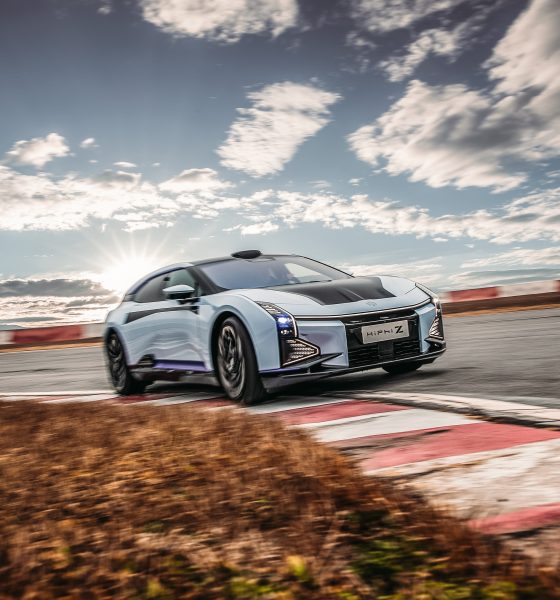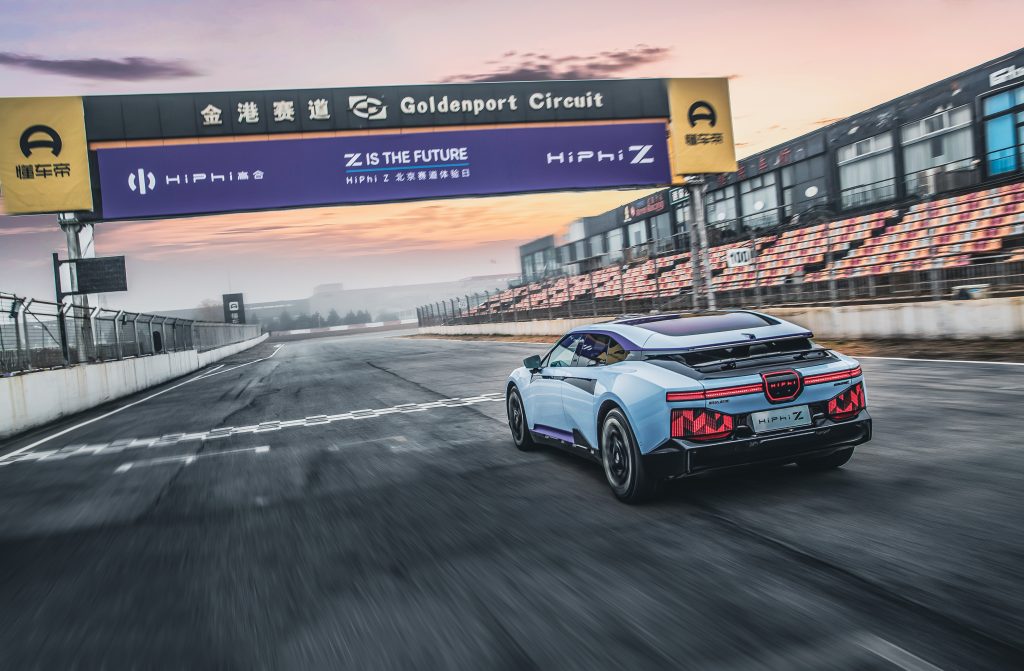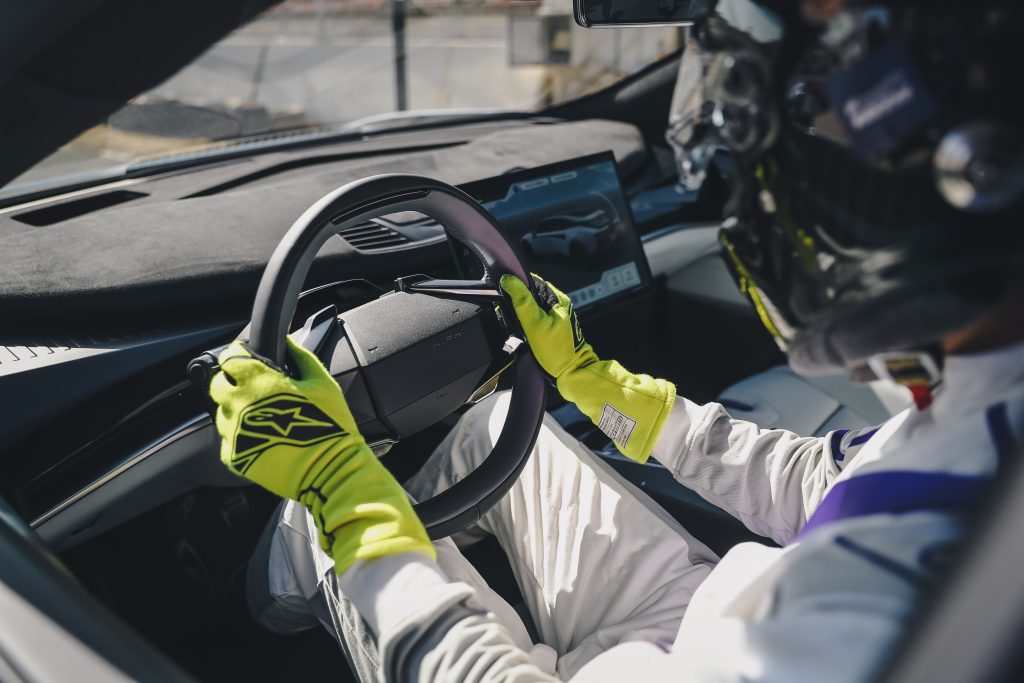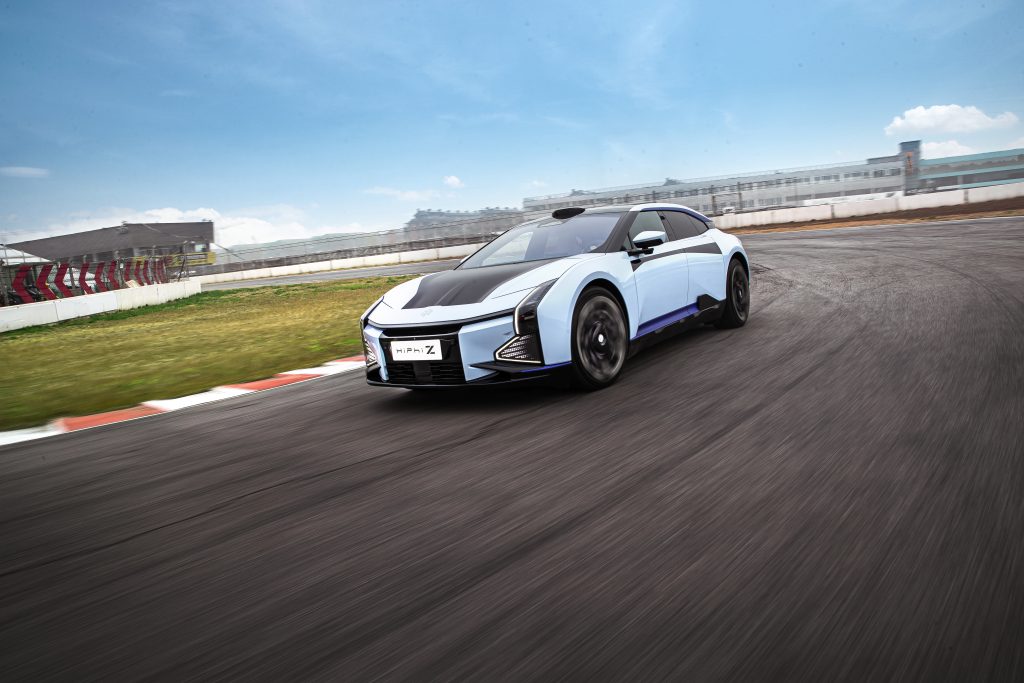

News
China’s HiPhi Z looks to carve its own niche in a competitive EV market (Feature)
Only the remarkable survive in China’s hyper-competitive electric vehicle sector. Amidst the price war initiated by players like Tesla, analysts have stated that some of the country’s automakers may not survive. HiPhi, a young company that has made some waves in China’s premium segment, intends to be one of the country’s prime carmakers, even after the price war.
It is then pertinent for HiPhi to ensure that its second flagship, the Z, is compelling enough that potential buyers would consider it over more established rivals. This is easier said than done. In the United States, one can see that the number of all-electric cars is steadily increasing. This situation is more pronounced in China, with 155 new battery electric and plug-in hybrid vehicles set to be unveiled this year alone.

HiPhi is headquartered in Shanghai, and the company launched in 2019 with the HiPhi X, an SUV. The X was quite successful, with the China Automotive Technology & Research Center noting that the all-electric SUV was one of the country’s best-selling premium EVs in 2021. The HiPhi Z is the company’s second vehicle, and it comes in the form of a shooting brake that’s available in both four-seat and five-seat configurations.
The Z is a pretty eye-catching car, with its aggressive lines and unashamedly futuristic exterior. But apart from its looks, it also has some bite. It features a total system power of 494 kW and 820 Nm of torque. The vehicle has an official 0-100km/h acceleration time of 3.8 seconds, which may seem underwhelming compared to some popular electric cars like the Model 3 Performance and Model S Plaid. But as per a longtime Tesla owner, the Z has some characteristics that warrant a serious look nonetheless.

Jason Man (known in the online electric vehicle community as Jay in Shanghai), has not only experienced Tesla’s lineup of electric cars. Being a longtime EV advocate, he has also tried out domestic electric vehicles like the NIO ET7, NIO ET5, and the ZEEKR 001. And in a conversation with Teslarati, he remarked that the HiPhi Z still stood out somewhat. It may not be as brutally quick as Tesla’s fastest cars, but it does offer something substantial to those who choose to get behind the wheel of the vehicle.
Jay was fortunate enough to take the Z around the track during the HiPhi Z Track Experience at Goldenport International Circuit in Beijing. Initially, attendees of the event were driven around the track by a professional driver, but they were also given the chance to take the Z around the track for a spin. HiPhi noted that it was still developing a dedicated Track Mode for the Z, but even as is, it was already quite capable around the track.

The longtime Tesla owner told Teslarati that the Z handled very well during its entire track run. It hugged the corners well, and it was surprisingly nimble despite its large size. Surprisingly enough, the Z was actually comfortable even at high speeds. Its ride was not harsh and NVH was also good.
“I was shocked at how well this car handles on the track. Even at the high speed section on the track, I felt fully in control of the car. It was very confident around the corners. I felt that the wider rear tires and active rear-wheel steering helped a lot with the handling, giving me excellent grip when cornering. This gave me the confidence to push the car to the limit,” the longtime EV owner said.

HiPhi has so far sold over 1,000 units of the Z this year, which is quite impressive considering that the vehicle itself sells for a premium at 610,000 yuan ($88,690). This hints that little by little, the company is establishing a presence in the Chinese market.
And just like leaders such as Tesla, it is only just getting its stride. As per the company in a comment to Teslarati, HiPhi’s next project is its most ambitious project yet: a five-seat family SUV called the HiPhi Y. That vehicle is poised to be more affordable, but the EV maker would have to dig deep to compete in that segment. China’s premium SUV segment, after all, is already home to another “Y” — the Tesla Model Y, which is one of the country’s best-selling premium SUVs.
Don’t hesitate to contact us with news tips. Just send a message to simon@teslarati.com to give us a heads up.

Elon Musk
Elon Musk and Tesla AI Director share insights after empty driver seat Robotaxi rides
The executives’ unoccupied tests hint at the rapid progress of Tesla’s unsupervised Robotaxi efforts.

Tesla CEO Elon Musk and AI Director Ashok Elluswamy celebrated Christmas Eve by sharing personal experiences with Robotaxi vehicles that had no safety monitor or occupant in the driver’s seat. Musk described the system’s “perfect driving” around Austin, while Elluswamy posted video from the back seat, calling it “an amazing experience.”
The executives’ unoccupied tests hint at the rapid progress of Tesla’s unsupervised Robotaxi efforts.
Elon and Ashok’s firsthand Robotaxi insights
Prior to Musk and the Tesla AI Director’s posts, sightings of unmanned Teslas navigating public roads were widely shared on social media. One such vehicle was spotted in Austin, Texas, which Elon Musk acknowleged by stating that “Testing is underway with no occupants in the car.”
Based on his Christmas Eve post, Musk seemed to have tested an unmanned Tesla himself. “A Tesla with no safety monitor in the car and me sitting in the passenger seat took me all around Austin on Sunday with perfect driving,” Musk wrote in his post.
Elluswamy responded with a 2-minute video showing himself in the rear of an unmanned Tesla. The video featured the vehicle’s empty front seats, as well as its smooth handling through real-world traffic. He captioned his video with the words, “It’s an amazing experience!”
Towards Unsupervised operations
During an xAI Hackathon earlier this month, Elon Musk mentioned that Tesla owed be removing Safety Monitors from its Robotaxis in Austin in just three weeks. “Unsupervised is pretty much solved at this point. So there will be Tesla Robotaxis operating in Austin with no one in them. Not even anyone in the passenger seat in about three weeks,” he said. Musk echoed similar estimates at the 2025 Annual Shareholder Meeting and the Q3 2025 earnings call.
Considering the insights that were posted Musk and Elluswamy, it does appear that Tesla is working hard towards operating its Robotaxis with no safety monitors. This is quite impressive considering that the service was launched just earlier this year.
Elon Musk
Starlink passes 9 million active customers just weeks after hitting 8 million
The milestone highlights the accelerating growth of Starlink, which has now been adding over 20,000 new users per day.

SpaceX’s Starlink satellite internet service has continued its rapid global expansion, surpassing 9 million active customers just weeks after crossing the 8 million mark.
The milestone highlights the accelerating growth of Starlink, which has now been adding over 20,000 new users per day.
9 million customers
In a post on X, SpaceX stated that Starlink now serves over 9 million active users across 155 countries, territories, and markets. The company reached 8 million customers in early November, meaning it added roughly 1 million subscribers in under seven weeks, or about 21,275 new users on average per day.
“Starlink is connecting more than 9M active customers with high-speed internet across 155 countries, territories, and many other markets,” Starlink wrote in a post on its official X account. SpaceX President Gwynne Shotwell also celebrated the milestone on X. “A huge thank you to all of our customers and congrats to the Starlink team for such an incredible product,” she wrote.
That growth rate reflects both rising demand for broadband in underserved regions and Starlink’s expanding satellite constellation, which now includes more than 9,000 low-Earth-orbit satellites designed to deliver high-speed, low-latency internet worldwide.
Starlink’s momentum
Starlink’s momentum has been building up. SpaceX reported 4.6 million Starlink customers in December 2024, followed by 7 million by August 2025, and 8 million customers in November. Independent data also suggests Starlink usage is rising sharply, with Cloudflare reporting that global web traffic from Starlink users more than doubled in 2025, as noted in an Insider report.
Starlink’s momentum is increasingly tied to SpaceX’s broader financial outlook. Elon Musk has said the satellite network is “by far” the company’s largest revenue driver, and reports suggest SpaceX may be positioning itself for an initial public offering as soon as next year, with valuations estimated as high as $1.5 trillion. Musk has also suggested in the past that Starlink could have its own IPO in the future.
News
NVIDIA Director of Robotics: Tesla FSD v14 is the first AI to pass the “Physical Turing Test”
After testing FSD v14, Fan stated that his experience with FSD felt magical at first, but it soon started to feel like a routine.

NVIDIA Director of Robotics Jim Fan has praised Tesla’s Full Self-Driving (Supervised) v14 as the first AI to pass what he described as a “Physical Turing Test.”
After testing FSD v14, Fan stated that his experience with FSD felt magical at first, but it soon started to feel like a routine. And just like smartphones today, removing it now would “actively hurt.”
Jim Fan’s hands-on FSD v14 impressions
Fan, a leading researcher in embodied AI who is currently solving Physical AI at NVIDIA and spearheading the company’s Project GR00T initiative, noted that he actually was late to the Tesla game. He was, however, one of the first to try out FSD v14.
“I was very late to own a Tesla but among the earliest to try out FSD v14. It’s perhaps the first time I experience an AI that passes the Physical Turing Test: after a long day at work, you press a button, lay back, and couldn’t tell if a neural net or a human drove you home,” Fan wrote in a post on X.
Fan added: “Despite knowing exactly how robot learning works, I still find it magical watching the steering wheel turn by itself. First it feels surreal, next it becomes routine. Then, like the smartphone, taking it away actively hurts. This is how humanity gets rewired and glued to god-like technologies.”
The Physical Turing Test
The original Turing Test was conceived by Alan Turing in 1950, and it was aimed at determining if a machine could exhibit behavior that is equivalent to or indistinguishable from a human. By focusing on text-based conversations, the original Turing Test set a high bar for natural language processing and machine learning.
This test has been passed by today’s large language models. However, the capability to converse in a humanlike manner is a completely different challenge from performing real-world problem-solving or physical interactions. Thus, Fan introduced the Physical Turing Test, which challenges AI systems to demonstrate intelligence through physical actions.
Based on Fan’s comments, Tesla has demonstrated these intelligent physical actions with FSD v14. Elon Musk agreed with the NVIDIA executive, stating in a post on X that with FSD v14, “you can sense the sentience maturing.” Musk also praised Tesla AI, calling it the best “real-world AI” today.








